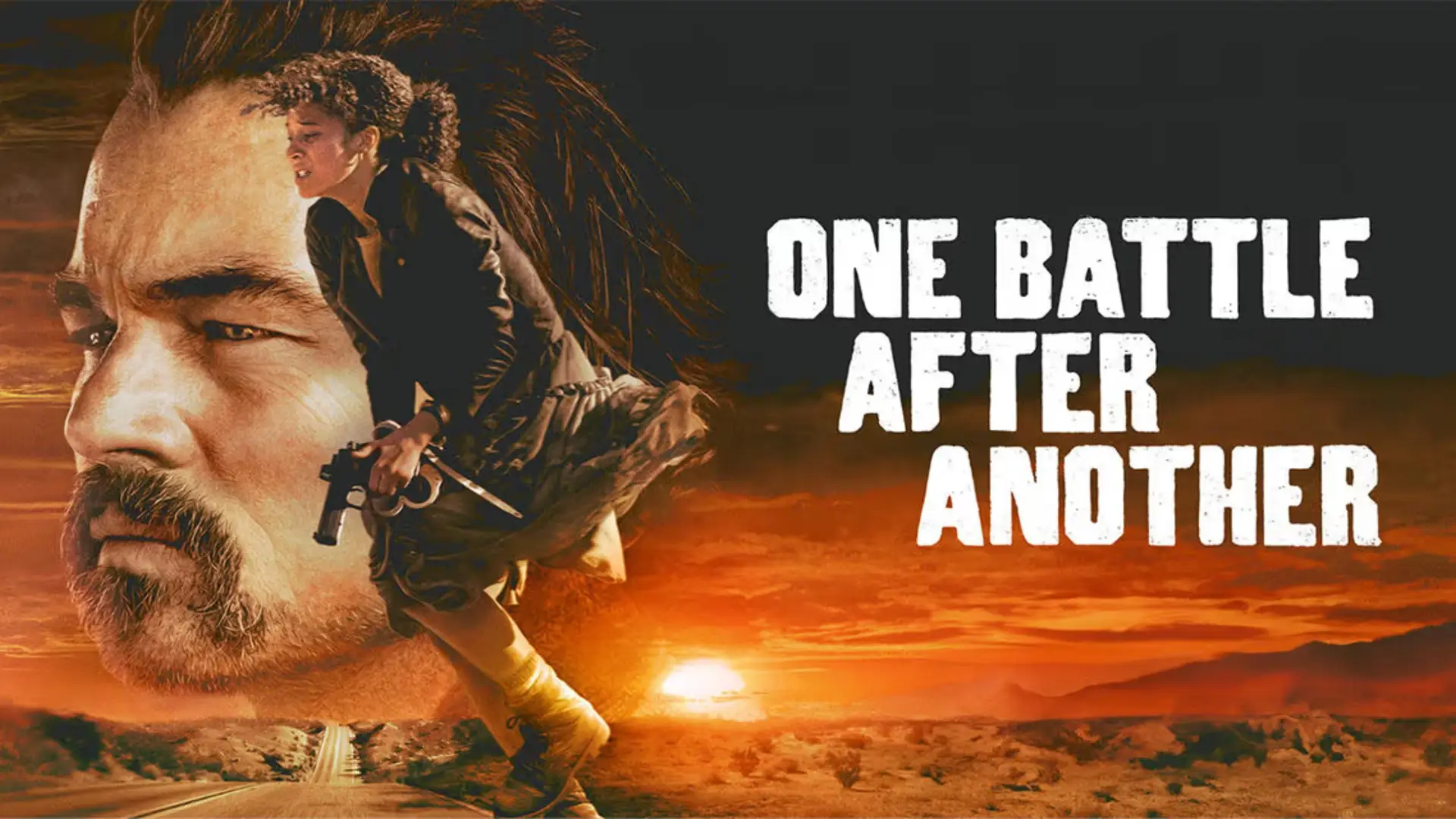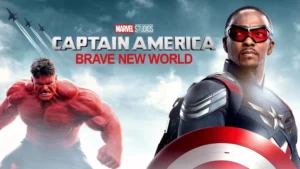One Battle After Another – A Deep Dive into Revolt, Redemption & Resonance
When you settle in for One Battle After Another, you’re not simply watching a run-of-the-mill action thriller. This film, written, directed and produced by Paul Thomas Anderson, plays like a collision between political upheaval, personal legacy and a frenetic chase to reclaim lost ground. It’s ambitious, textured, and at times bruising. Let’s unpack how it works — the cast, the narrative core, the box-office outcome, the niche it carves, and the deeper layers it offers.
Cast & Key Characters of One Battle After Another Movie.
From the outset, the film carries heavyweight talent. According to sources, the principal cast includes:
- Leonardo DiCaprio as Bob Ferguson (or simply “Bob”), the former revolutionary protagonist.
- Sean Penn as Col. Steven J. Lockjaw, the antagonistic force resurging from Bob’s past.
- Benicio del Toro as Sensei Sergio, a former comrade / intermediary figure in Bob’s revolutionary circle.
- Regina Hall as Deandra — a key figure in the network of ex-revolutionaries.
- Teyana Taylor as Perfidia Beverly Hills, another member of the group.
- Chase Infiniti as Willa Ferguson-Beverly Hills (Bob’s teenage daughter) — the spark that reignites the former revolutionary’s journey.
Regarding how many cast members: the film boasts an ensemble of “lead ensemble members” as listed by The Numbers. While the publicly listed cast above captures the major names, there are many supporting performers not individually listed in every summary; so one could safely say there are dozens of credited cast members, although official sources highlight roughly 6 principal leads.
Who is the “main character”? That’s clearly Bob (DiCaprio). The synopsis frames him as the ex-revolutionary forced back into action when his daughter is abducted, his past collides with his present, and he must lead the charge to rescue her and reckon with his legacy.
So:
- Main character = Bob (Leonardo DiCaprio)
- Supporting major characters = Lockjaw (Sean Penn), Sergio (Benicio del Toro), Deandra (Regina Hall), Perfidia (Teyana Taylor), Willa (Chase Infiniti)
- Ensemble cast beyond those six exists, but publicly the key focus is on those names.
Box Office & Financials.
Here’s where the film gets interesting. Despite the pedigree behind it, the numbers reveal a mixed outcome.
- Worldwide gross: Approximately US $171,006,387.
- Domestic (U.S.) gross: ~ US $64,106,387.
- International gross: ~ US $106,900,000.
- Reported production budget: Roughly US $130 – 140 million.
From these figures, one sees that the film has not (at least publicly) made a huge profit margin — given that typically marketing and distribution costs on such a large scale will add significantly. Some sources even label it a “flop” from a purely commercial ROI standpoint.
Opening weekend: The film opened with around US $22 – 22.4 million domestically.
Interpretation: While the film garnered strong critical acclaim (I’ll touch on that later), the commercial returns are underwhelming relative to its budget and studio expectations. It occupies a niche spot: more of a prestige-action film than a big tentpole blockbuster.
The Niche & Unique Positioning.
What makes One Battle After Another stand out? What niche does it serve in the cinematic landscape?
- Auteur meets action: This is a big-budget action / thriller film directed by Paul Thomas Anderson — a filmmaker more associated with art-house or prestige fare (e.g., There Will Be Blood, Phantom Thread). The blend of his signature style with a genre more mainstream than his usual territory is rare. Wikipedia summarises that this film is his most expensive to date.
- Politically charged narrative: The film isn’t just about chasing a daughter or blowing stuff up. It’s embedded in themes of revolution, resistance, legacy, trauma of activism and the long-tail effects of ideologies. For example, one review said: “A remarkably propulsive… piece of work about the human beings caught up in the chaotic machine.”
- Hybrid genre: It mixes political thriller, action spectacle and personal drama (father/daughter, generational conflict). The result is a film that appeals to audiences wanting more than just explosions, but also a character-driven story with emotional stakes.
- Mid-tentpole ambition: It’s not a franchise, not a sequel, not a known IP (although loosely inspired by the novel Vineland by Thomas Pynchon). So it occupies a category of “big original film” — which is increasingly rare in modern Hollywood.
- Critical prestige vs. commercial gamble: The niche is also in being a prestige action: big enough to matter at the box office, but layered enough for critics and awards buzz. It’s targeted to those who like blockbuster scale and meaningful content.
So if you were to tag its niche, you might call it: “an auteur-driven political action thriller aimed at adult audiences who crave both spectacle and substance.”

Deep Details – The Story, Themes & Mechanics.
Story & Setup
Bob Ferguson, once a revolutionary insurgent, has tried to move into quiet life. He and his daughter Willa live off-grid, attempting to leave the past behind. But when a former enemy (Col. Steven J. Lockjaw) resurfaces — and Willa is abducted or otherwise drawn into the conflict — Bob is forced back into his old world, calling on his former allies.
The narrative unfolds across multiple layers: the chase-rescue plot on the surface, and underneath, a reckoning of what revolution meant, what it cost, and how one escapes (or doesn’t) from your past. A key tension: Can you reclaim freedom for your loved ones if you’ve already sacrificed pieces of yourself in the name of ideology?
Characters & Arcs
- Bob: He is central. His arc follows from disillusionment, to resurgence, to possibly redemption or reckoning. As a father, he has a new identity — but the old identity refuses to stay buried.
- Willa: The captive daughter becomes the emotional core — she’s more than a MacGuffin. Her presence forces Bob and the ensemble to confront what the revolution left behind.
- Lockjaw: The antagonist, representing the institutionalised power that Bob once agitated against. He is the face of the enemy Bob thought he’d evaded.
- Sensei Sergio, Deandra, Perfidia: These characters populate Bob’s network of former revolutionaries. They have their own burdens and regrets. Their inclusion gives the story depth: it’s not just one man fighting, but the echoes of a movement returning to haunt them all.
Themes
- Legacy & consequence: What happens when your radical youth meets middle-age? The One Battle After Another film explores what it means to have fought something and then tried to walk away.
- Fatherhood and responsibility: The relationship between Bob and Willa reframes Bob’s fight not just for ideology but for family.
- Resistance and power: The dynamics between Bob and Lockjaw engage with what happens when institutional power meets insurgent idealism.
- Trauma and memory: The past isn’t quiet; it resonates. The One Battle After Another film uses flashbacks, voice-overs, or visual motifs (depending on Anderson’s style) to evoke memory’s hold on these characters.
- Moral ambiguity: This isn’t a black-and-white tale of good vs evil. The revolutionaries weren’t without fault; the institutions aren’t uniformly evil. The film asks: after you’ve fought for something, do you become the thing you fought against?
Style & Mechanics
According to sources, this One Battle After Another film was shot using VistaVision, a format seldom used in modern times — giving it a distinct visual look.Anderson’s direction is praised for bringing his usual precision to an action context: it’s less chaotic spectacle, more choreographed, reflective of character as much as nerve-shredding tension. One review states: “He’s made a … live wire that drops in the first scene, setting off sparks for the next 162 minutes.”
The runtime, around 162 minutes (or 161 depending on source) suggests a sprawling canvas — again atypical for mainstream action films which often aim for 120 minutes or less.
The One Battle After Another film’s settings appear to span the off-grid hideouts, urban collapses, military strongholds and desert roads — visually underlining the literal and metaphorical journeys the characters make. The ensemble structure allows for multiple vantage points, not just Bob’s, giving the narrative a team-mission feel even as Bob remains central.
Why It Works (and Where It Stumbles)
Strengths:
- The emotional stakes (father/daughter) make the action meaningful, not just adrenaline.
- The cast delivers — with DiCaprio anchoring, and supporting roles that add texture rather than mere filler.
- Anderson’s artistry elevates genre staples: you get the chase, the fight, the set-pieces — but also the introspection and the aftermath. Critics have remarked on how the film carries weight beyond its genre.
- The blending of political commentary with action offers something fresh in a crowded marketplace.
Weaknesses:
- Because it’s ambitious, the length and density may feel overwhelming for some viewers. There are remarks that it might be “stuffed” with too many threads.
- Commercially, the film struggled to break out into mainstream mass-market levels — possibly due to its hybrid nature (neither pure blockbuster fluff nor pure arthouse minimalism).
- The pacing required to cover both the ensemble mission and deep character work may cause some section lulls for those expecting non-stop action.
Why It Matters & What to Take Away.
In today’s cinema landscape — where franchises, sequels, and predictable formulas dominate — One Battle After Another matters because it dares to combine big-scale action with meaningful inquiry. It asks: What does a revolution cost us? What happens when yesterday’s fight becomes today’s shadow?
For cinephiles, the film offers an argument: you can have spectacle and substance. For general audiences, it provides thrills while also giving them something to chew on afterward. For the industry, it proves that auteur filmmaking doesn’t have to stay small-scale; you can scale up and still retain a personal voice.
If one were to distil a takeaway: it’s a film about return. The return to conflict, the return to family, the return to self. The title itself — One Battle After Another — suggests that for this kind of life, the fight never really ends; you just shift theatres, shift stakes. The personal becomes political, and the political becomes personal again.
Final Thoughts of One Battle After Another Movie.
Having mapped out the cast (six major leads plus ensemble), identified the main character (Bob/Leonardo DiCaprio), reviewed the box-office (≈ US$171 million worldwide vs ~US$130 + million budget), and explored the film’s niche and deeper layers, the conclusion is this: One Battle After Another is a film worthy of attention. It may not have broken box-office records, but it moves the needle in terms of what large-scale cinema can be.
If you’re going to watch it: do so in a theatre if possible — the scale, the cinematography (VistaVision), the sound design all reward the big screen. After watching, take a moment to reflect on the characters’ pasts and how that baggage influences their actions. It’s more than just “ex-revolutionary rescues daughter” — it’s “what happens after the revolution, when the battlefield shifts and your ideals collide with everyday life.”
In short: this is a One Battle After Another film that fights a war on two fronts — external action and internal reckoning. And that makes it not only an entertaining ride, but also one that lingers long after the credits roll.





